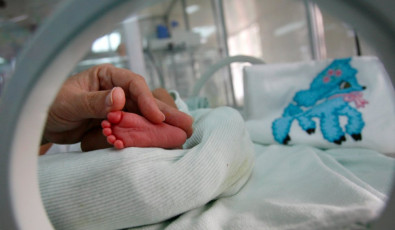Disclaimer*: The articles shared under 'Your Voice' section are sent to us by contributors and we neither confirm nor deny the authenticity of any facts stated below. Parhlo will not be liable for any false, inaccurate, inappropriate or incomplete information presented on the website. Read our disclaimer.
This story has been submitted by Aiman Salam.
Pakistan is a populous country that has always fought for its beliefs and rights. The country has, unfortunately, failed to protect its infants.Pakistan is a populous country that has always fought for its beliefs and rights. The country has, unfortunately, failed to protect its infants. The world infant mortality rate, as per the United Nations, is 49.4 and 34.1 according to the CIA World Factbook. Pakistan has the third-highest infant mortality rate which is the worst in the world (57.2% approx), are we doing anything to control it?
[adinserter block= “3”]
Newborn child mortality is the death of a baby before their first birthday. Infant mortality rate (IMF) alludes to the passing of babies before the age of 1, for every 1000 live births. The IMF is a health standard agent of a nation. Every year, 65 out of 1000 babies bite the dust because of lacking clinical offices, sickness, and unhealthiness of the mother or the kid. The initial 28 days of life – the “neonatal period” – speak to the most crucial time for a youngster’s endurance.
Mortality rate & Pakistan
In Pakistan, the infant death rate has only reduced by 13% per year. It shows the current pace is low for the nation to arrive at its kid endurance Millenium advancement objective (MDG). The government has collaborated with UNICEF to improve infant and maternal death rates.

Several research and studies have detected the risk factors for neonatal death to help form strategies to improve neonatal survival.
Pakistan Medical Association says one of the reasons for high baby and maternal death rates is unsafe delivery practices. Home deliveries all alone are not an awful practices. However, they are risky in rural areas with unskilled assistants.
Examinations show that 75% of infant passings are brought about by three preventable and treatable conditions. These include pre-birth and delivery issues, and infections.
Vaccines & childcare
Practices like proper vaccines and childcare in the beginning phases can help spare a large number of kids. Sepsis and asphyxia (stifling on the birth line) are other driving reasons for death. Additionally, applying toxic substances on the umbilical line can hurt the sepsis.
Around 50% of births are at-home births. Of these, 72% are gone when unskilled individuals do the delivery. They don’t take measures to guarantee that the infant endures.
From a Pakistan emergency clinic-based review research a 68% pace of infant mortality because of low birth weight was induced considered as worst and hard to control. Out of which 74% were preterm inferring high mortality among low birth preterm newborn children. Low weight preterm births are the greatest reason for baby passings in Pakistan. Helpless admittance to vaccines, inferior quality maternal and infant care administrations coerces these deaths.
Delivery complexities
Newborn children whose moms had delivery issues had a higher danger of neonatal passing. The delivery issues included vaginal dying and nearness of fever or seizures. A skilled professional should oversee these confusions. However, only 36% of deliveries were conducted by health professionals.
The most unfortunate family riches list quintile is a hazard factor for neonatal mortality. Secondary research of Sudan DHS has discovered a lower family unit riches record as a hazard factor for neonatal mortality.
[adinserter block= “10”]
Punjab is the most populated area of Pakistan with the provincial and urban masses. In Punjab, there are around 2,800 health facilities (urban and rural areas) with skilled staff and subsidized drugs.
In 2011, an overview was led to assess the current status of essential wellbeing units in Punjab. Out of 850 wellbeing units, 7.2% were shut, and 52.4% didn’t have the staff at the hour of review. Moreover, the arrangement of these offices was frail and medication was also not available.

The female literacy rate is important
Another research showed that female literacy and the parents’ work schedule highly affect infant mortality in Pakistan and make it worse to control . The more the female literacy rate, the lesser will be the chance of an infant’s death. Meanwhile, educated mothers will be well aware of maintaining a child’s health. Newborns with mothers not working had a lower danger of mortality in the neonatal period. The contribution of mothers in work outside homes may influence the consideration given to the infant.
Breastfeeding is one of the most significant health practices known. Moreover, it has advantages for newborn children, mom, and family. Quick and elite breastfeeding is basic for the success of a large number of Sustainable Development Goals (SDGs).
Mortality rate & WHO
Meanwhile, the World health organization recommends policies for life-guaranteeing conditions for infants and mothers. It is important to oversee delivery complexities and antenatal consideration projects.
[adinserter block= “4”]
Moreover, an upgraded financial plan should be there for their wellbeing. They need clean drinking water, gifted birth offices, and access to skilled maternity specialists. It’s high time that the people and the government come together and protect the future of this Nation.
Also Read: This Girl Highlights Why Child Marriages Need To Be Stopped ASAP!
What do you think of this story? Let us know in the comments section below.







